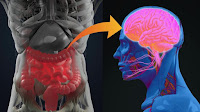FACTORS INFLUENCING EXERCISE ADHERENCE
PERSONAL,PROGRAM,ENVIRONMENT
Program factors
DOES THE PROGRAM MEET
"CHANGING CIRCUMSTANCES IN THE CLIENT'S LIFE"
Environmental factors: "AMBIANCE"
Personal factors:
THE CLIENT'S ABILITY TO RESOLVE COMMON BARRIERS TO EXERCISE.
TRAVEL
INJURY
ILLNESS (MUSCULOSKELETAL)
COMPETING DEMANDS ON TIME
BOREDOM
HIGH STRESS PERIODS
PROGRAM
CONVIENCE
ENJOYABILITY
PERCEPTIONS THAT THE PROGRAM IS NOT UNCOMFORTABLE OR DIFFICULT
younger (particularly high impact)
highly educated
white collar workers
whites as compared with minority groups
not significantly overweight
ASSESSMENT TOOLS
Exercise Confidence Survey
helps to identify which clients benefit from strategies that enhance exercise
PRINCIPLES OF ADHERENCE AND MOTIVATION
JOINT RESPONSIBILITY
SHARED WITH THE CLIENT
THE PERSONAL TRAINER'S JOB/COMPLEX ROLE INCLUDES TEACHER, COACH, ADVISOR, SUPPORTER,COUNSELOR NEGOTIATOR
STAGES OF THE PERSONAL TRAINER/CLIENT RELATIONSHIP
STAGE 1
Rapport
interpersonal communication skills
STAGE 2
Investigation
information gathering skills
STAGE 3
Problem solving or decision making skills
STAGE 4
Behavioral change skills (feedback, contractions,modeling,etc..)
EXERCISE DESIGN, INSTRUCTION, CORRECTION
the body is like an incredible machine!
It's function actually improves with use of its movement is compatible with its design and the physical laws of motion.
However, if repetitive movement occurs that is incompatible with the body's design, a breakdown results, either as an acute injury or degeneration over time.
It is vital that the exercises and activities you employ as a personal trainer not only enhance the body's performance but also prevent it's injury in the gym and in real life. Use the tools and knowledge base of kinesiology to prepare your clients for the physical activities, postures, and the phsysical stresses it undergoes in those positions, identify habitual conditions. Design activities to improve under those conditions, improve the body's function under those conditions
Program factors
DOES THE PROGRAM MEET
"CHANGING CIRCUMSTANCES IN THE CLIENT'S LIFE"
Environmental factors: "AMBIANCE"
Personal factors:
THE CLIENT'S ABILITY TO RESOLVE COMMON BARRIERS TO EXERCISE.
TRAVEL
INJURY
ILLNESS (MUSCULOSKELETAL)
COMPETING DEMANDS ON TIME
BOREDOM
HIGH STRESS PERIODS
PROGRAM
CONVIENCE
ENJOYABILITY
PERCEPTIONS THAT THE PROGRAM IS NOT UNCOMFORTABLE OR DIFFICULT
younger (particularly high impact)
highly educated
white collar workers
whites as compared with minority groups
not significantly overweight
ASSESSMENT TOOLS
Exercise Confidence Survey
helps to identify which clients benefit from strategies that enhance exercise
PRINCIPLES OF ADHERENCE AND MOTIVATION
JOINT RESPONSIBILITY
SHARED WITH THE CLIENT
THE PERSONAL TRAINER'S JOB/COMPLEX ROLE INCLUDES TEACHER, COACH, ADVISOR, SUPPORTER,COUNSELOR NEGOTIATOR
STAGES OF THE PERSONAL TRAINER/CLIENT RELATIONSHIP
STAGE 1
Rapport
interpersonal communication skills
STAGE 2
Investigation
information gathering skills
STAGE 3
Problem solving or decision making skills
STAGE 4
Behavioral change skills (feedback, contractions,modeling,etc..)
EXERCISE DESIGN, INSTRUCTION, CORRECTION
the body is like an incredible machine!
It's function actually improves with use of its movement is compatible with its design and the physical laws of motion.
However, if repetitive movement occurs that is incompatible with the body's design, a breakdown results, either as an acute injury or degeneration over time.
It is vital that the exercises and activities you employ as a personal trainer not only enhance the body's performance but also prevent it's injury in the gym and in real life. Use the tools and knowledge base of kinesiology to prepare your clients for the physical activities, postures, and the phsysical stresses it undergoes in those positions, identify habitual conditions. Design activities to improve under those conditions, improve the body's function under those conditions

Comments
Post a Comment